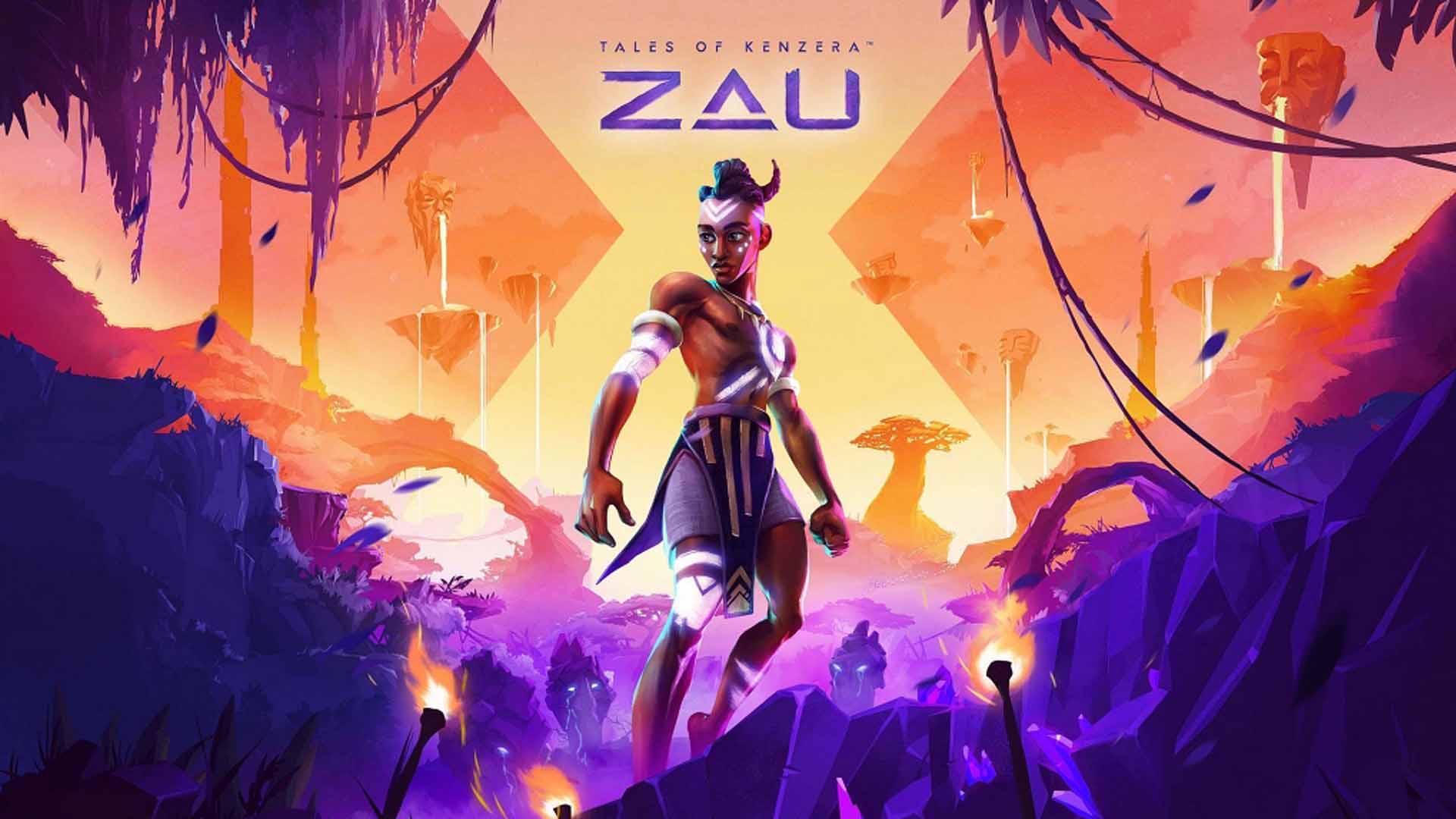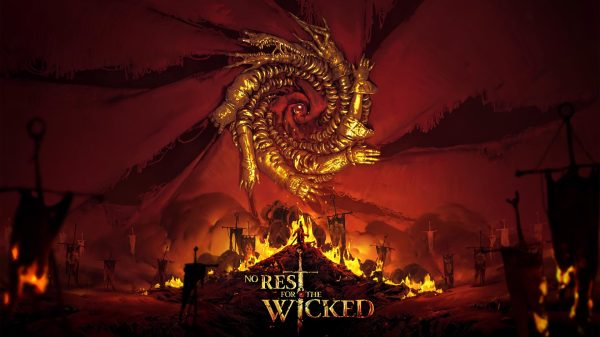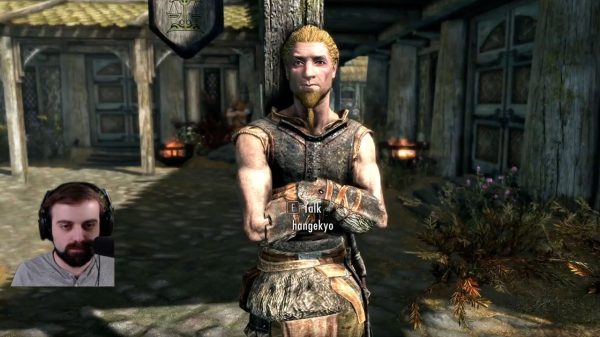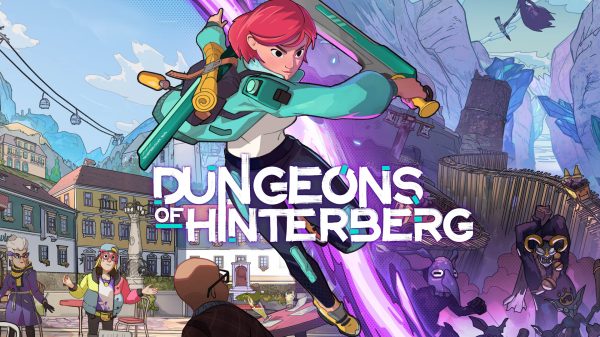Tales of Kenzera: ZAU is less of a love letter and more of a love novel. Penned by actor turned game developer Abubakar Salim and his team at Surgent Studios, its myriad inspirations, ideas, and even pain points, all flow from sincere fealty to the platforming genre and an unapologetic expression of both the wounds of loss and the triumph of cultural heritage. As far as debut efforts go, it bears all the expected markers of an excited but youthful team entering a space with fresh ideas and something to prove, the beating heart of the thing perhaps more important than its solid bones.
Following the death of his father, Zuberi is completely unmoored. Despite the game’s fantastical creatures and vibrant other worlds, you begin Tales of Kenzera in a humble, if Afrofuturistic, apartment. The door to his Baba’s study ajar just enough to beckon but not outright call, Zuberi is in the deep throes of grief as he moves through this living space, the breathtaking city of Amani beyond the windows effectively a shimmering mirage of life in Zuberi’s now otherwise darkened world. Concerned, Zuberi’s Mama passes on to him the story of Zau, a young Shaman who engages the god of death in a perilous dance to reclaim his own Baba’s soul. This story itself written by Zuberi’s Baba in his final weeks, a father reaching across the void to comfort his son through art.

The Sun and Moon masks work well as both narrative and gameplay device
Heavily inspired by Salim’s Kenyan heritage and the loss of his father, Tales of Kenzera winds up a fascinating bit of narrative construct. Abstracted through layers and mechanics, we have a story within a story within a story all within a game, the trappings of the genre used to solidify the connective tissue between fiction and reality. Salim has been remarkably open about how his struggles with grief directly impacted the design doc of Tales of Kenzera and the trickledown impact this personal core has on the game is pervasive and impressive. There isn’t a single note of the emotional experience that feels unintentional, every one of Zuberi/Zau’s struggles, be it petulance or ego, landing with weight and purpose.
There’s a small army’s worth of work that goes into something with this degree of emotional clarity of course, Tales of Kenzera’s aesthetic markers and performances anchoring the game nicely. Salim leads a killer cast as Zau, his own pride bleeding into the character, backed by Tristan D. Lalla’s Kalunga, the god of death and Zau’s travelling companion for much of the game. Elsewhere, Immortality composer Nainita Desai’s score soars, her weaving of traditional African instruments with outright bopping synths feeling effortless. The game’s visual chops are immediate too; Surgent’s vibrant new world is texture, varied, and impossible to deny.
It’s also not without note that I’m about five hundred words deep and barely touched the gameplay of Tales of Kenzera. The game’s creative lineage and production being so unique in the industry almost necessitates top billing to my mind– whether it’s the overtly subversive masculine vulnerability of its creator or the stacked list of Black creative talent on full display. It’s also because Tales of Kenzera’s moment-to-moment gameplay is, at least comparatively, less distinct and resistant to joyous celebration. Throughout roughly ten hours, you’ll duck, weave, and smash your way through a gorgeous array of levels, playing all the hits you’d expect from a 2D Metroidvania.
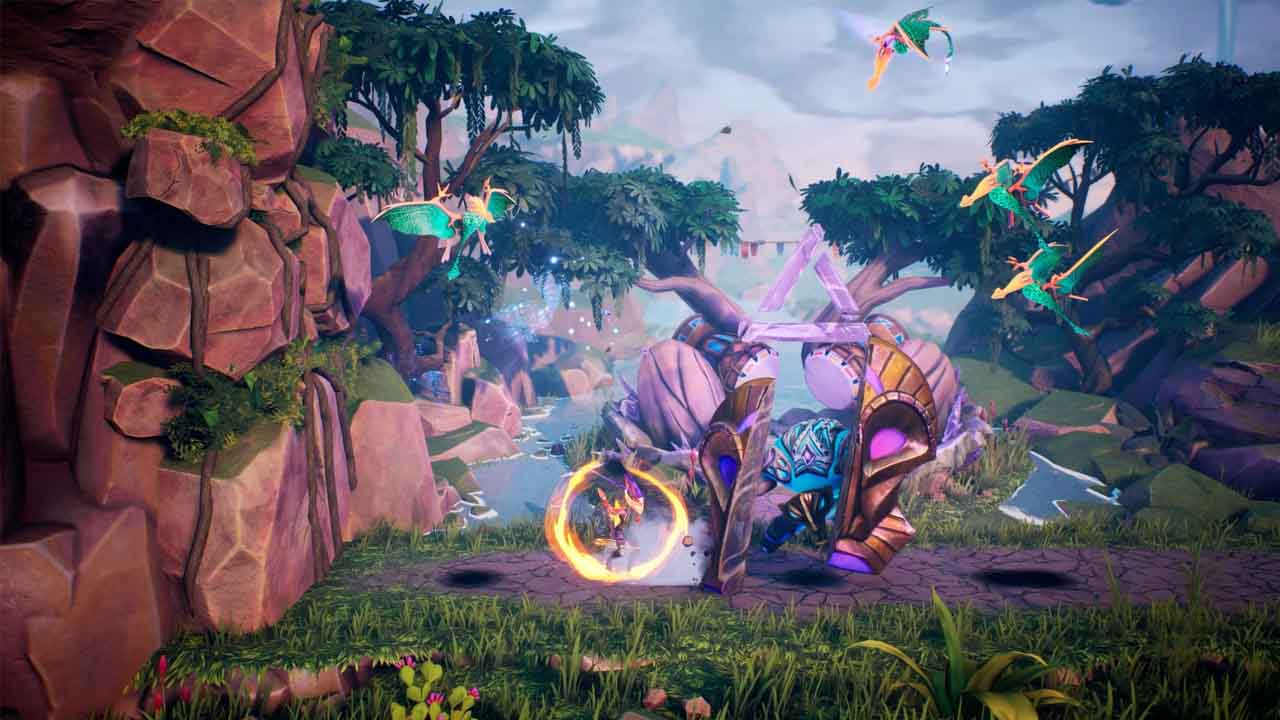
Combat and exploration are often vibrant and engaging
This right here is the moment you’re either in or out on Tales of Kenzera, its mechanical scope being both highly competent but expectedly reverent to its genre. Set on a quest by Kalunga to reclaim wayward spirits in exchange for his Baba’s return to the land of the living, Zau calls upon his Shaman training, wielding the masks of the Sun and Moon in both combat and exploration. Moon, which encases Zau in crystallised blue armour, enables long-range projectiles and stage-altering abilities, such as freeing rushing water to create pathways and the like. In turn, Sun drapes Zau in extravagant flowing fire and fabrics, pushing his speed through rapid melee jabs and faster traversal. As Tales of Kenzera rolls on, these mask abilities shift and grow, allowing for that sweet hit of Metroidvania backtracking dopamine but also giving combat its own time to shine, often in set piece battles and boss encounters.
Along the way, you’ll encounter challenge courses, which are neatly woven into the fabric of the level rather than the typical discreet breakout spaces, and a load of other genre staples often lead to the discovery of Shaman Trinkets and Ulogi, ability-enhancing equipables and upgrade currency respectively. Both masks have their skill trees, allowing you to mix and match powersets from each depending on your preferred playstyle, the shifting between masks done instantly and often needed during tight platforming and chaotic combat. Tales of Kenzera pushes momentum in a few fun ways too, your healing flask only refills with Spirit when you strike an enemy, necessitating aggressive play.
Elsewhere there’s the genre-specific flow of platforming and it’s here that Tales of Kenzera can start to strain. That love novel approach I mentioned up top rears its head in many ways when it comes to the game’s relationship to platforming. Sometimes this is charming; you’ll often need to find keys to open doors, these keys are just as often represented as spinning shiny objects comically out of reach, and when paired with Desai’s rhythmic upbeat backing tracks, it makes for an experience you’d swear was made for PS1-era sickos. However with that comes an adherence to some old-school level design, notably the absolutely cursed return to instant fail hazards.

Tales of Kenzera: ZAU packs so much colour and life into almost every frame
Tales of Kenzera controls well; the swiftness of mask switching, and the rapid responses required for certain platforming segments wouldn’t be possible, let alone fun, without a solid input foundation. These tools are sometimes layered over bizarre pacing though, the game shifting from smooth flow state platforming to razor sharping timing without warning, each failure made more painful by Zau’s paper-thin skin. Even a fraction of a brush up against certain surfaces will hard cut you to a black screen and reset progress, never more than a few seconds lost but lost all the same. There are difficulty modifiers for combat in the options menu, but unlike this year’s outstanding Prince of Persia: The Lost Crown, Tales of Kenzera never softens up its platforming challenges to allow for varying skill levels.
Hardly a deal breaker, if anything this kind of rigidity is a feature not a bug for many fans of the genre, but as someone who admittedly sucks at platformers, I did find these chokepoints a little too stifling. If only for how inviting the rest of Tales of Kenzera is though; these levels are gorgeous and beg for you to lock into this world and flow through it. Combat allows this, even on higher difficulty still feeling appropriately reactive, if challenging, and for the most part, the platforming is excellent. The same praise for its narrative abstractions can be levelled here, the process and challenges of grief turned into the process and challenges of a particular rough section or encounter, though your mileage on this will vary greatly. It’s a tremendous idea, even if its application runs amok on approachability and accessibility for the final product.
Final Thoughts
As Tales of Kenzera reaches its natural conclusions and the woes of its crunchier challenges fall away, it’s hard to not be happy in the afterglow. Here’s a game that, while mechanically rather safe, takes huge personal and cultural swings, infusing the genre and industry writ large with almost singular emotional reflections and broader, deeply necessary, creative visions. If this is your genre, you’ll have a blast with its tight platforming and expressive combat, but even if it’s not, bite down and give it a go. We deserve more games like Tales of Kenzera: ZAU.
Reviewed on PS5 // Review code supplied by publisher
Click here for more information on WellPlayed’s review policy and ethics

- Surgent Studios
- EA Originals
- PS5 / Xbox Series X|S / PC / Switch
- April 24. 2024



One part pretentious academic and one part goofy dickhead, James is often found defending strange games and frowning at the popular ones, but he's happy to play just about everything in between. An unbridled love for FromSoftware's pantheon, a keen eye for vibes first experiences, and an insistence on the Oxford comma have marked his time in the industry.





